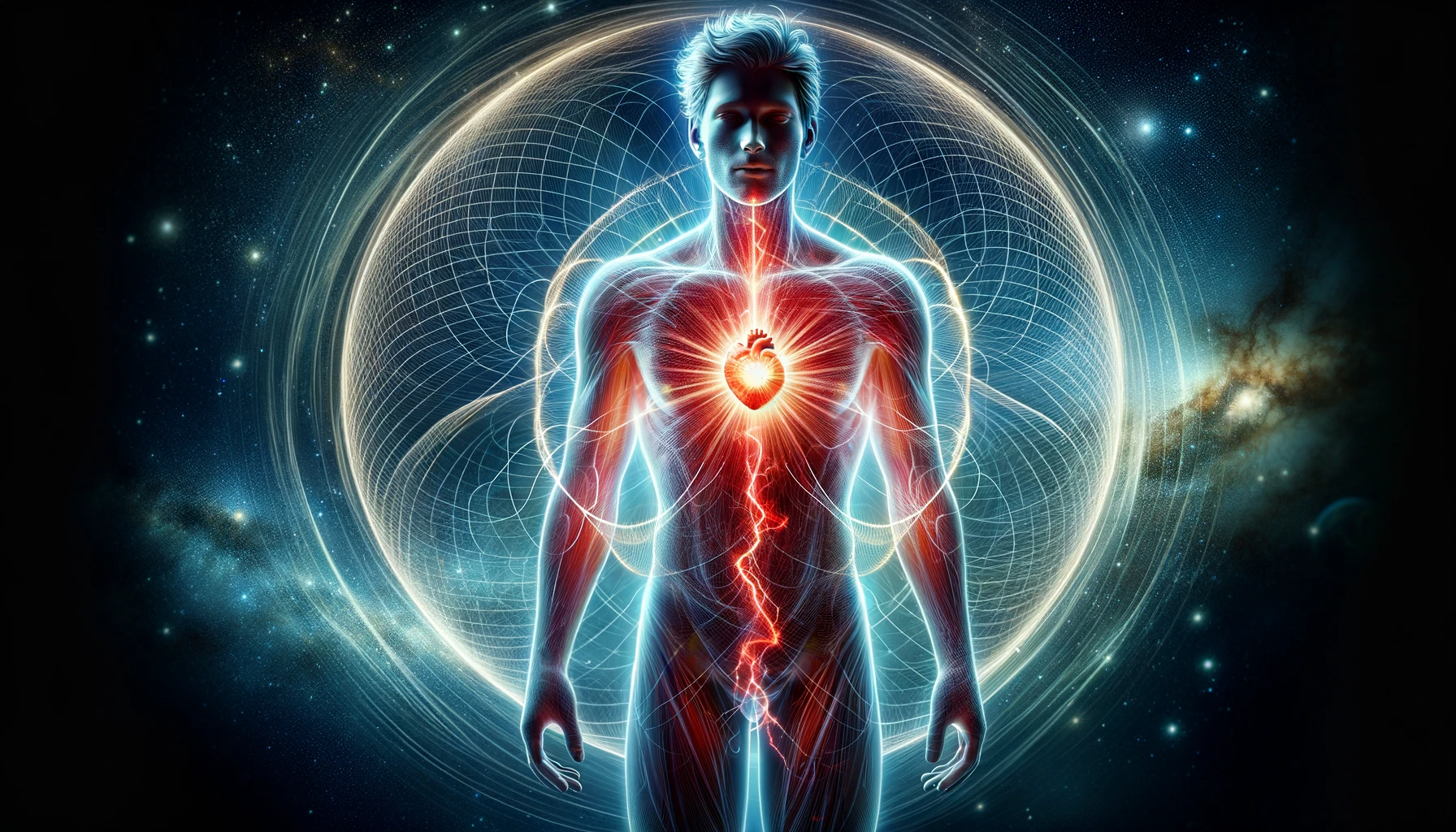It has been found that wireless radiation affects the heart in many ways. What processes within the body are affected by changes in heart rate and rhythm? Let’s explore
This article by Seema B., published on March 8, 2021, delves into the fascinating realm of biofield science, particularly focusing on the human electromagnetic field and its intricate interactions with the environment and within the body. Central to this study is the heart’s role in governing the body’s electromagnetic rhythms, largely due to its strong and consistent electromagnetic activity.
Key insights from the article include:
- Heart’s Electromagnetic Activity: The heart is highlighted as a pivotal organ in setting and maintaining the body’s electromagnetic patterns. Its electromagnetic activity is notably powerful and regular, making it a central network node that encodes and connects electromagnetic fields, conveying information throughout the body.
- Heart-Brain Communication: The heart’s magnetic field is astonishingly 5000 times stronger than the brain’s. This facilitates a robust communication pathway with the brain, where electromagnetic signals travel almost instantaneously, enabling rapid responses that influence brain physiology. This makes the heart a crucial component in cognitive and emotional processing.
- Systemic Influence and “Frequency Locking”: Every cell in the body can perceive the heart’s magnetic field, detectable up to 5 feet away from the body. This leads to “frequency locking,” a phenomenon where the cardiac energy of one person syncs with the brain activity of another. Additionally, the body receives electromagnetic energy from external sources, including the earth’s magnetic fields and modern electronic devices.
- Coherence and Therapy Effects: The heart’s electrical potentials naturally synchronize with the brain’s alpha wave activity. This coherence is amplified by appreciative emotions, leading to increased entrainment between body systems. Clinical trials have shown significant improvements in heart rate variability and reduced anxiety with therapies like Reiki and Healing Touch.
- Future Perspectives and Biofield Therapies: The article advocates for a shift in medical standards, suggesting a blend of biophysics with biochemistry to bridge the gap between conventional biochemical treatment approaches and quantum physics concepts. This integrated perspective could lead to a deeper understanding of how energy patterns impact disease processes.
The article emphasizes the need for a new paradigm in healthcare, one that recognizes the intricate web of functional connectivity governed by the human electromagnetic field, particularly the influential role of the heart. This perspective could pave the way for innovative treatments and a broader understanding of health and wellness.
There is indeed scientific research into the concept that the electromagnetic field (EMF) generated by the heart can influence the body and mind. Here are some sources where you can learn more about this topic:
- Naomedical discusses how the heart’s EMF can influence not only one’s own body but also the bodies of those around us. It can synchronize with the electromagnetic fields of others, fostering a sense of connection and empathy. Research has demonstrated that the heart’s EMF can be detected by others and can produce measurable effects within a 5-foot radius. This field is also closely connected to the brain, influencing both brain function and emotional processing.
- The HeartMath Institute has conducted several studies based on findings that the heart’s magnetic field varies with different emotional states. These studies suggest that the magnetic signals generated by the heart can affect individuals around us, acting as a form of biological encoding of information.
- Another chapter from the HeartMath Institute elaborates on the electromagnetic fields generated by the heart that may act as a synchronizing signal for the body, similar to the way radio waves carry information. The chapter emphasizes the evidence showing that this energy is transmitted internally to the brain.
- According to a publication available on Taylor & Francis, the heart generates the largest electromagnetic field in the body, with its electrical field being about 60 times greater in amplitude than brain waves, and its magnetic field is around 5000 times stronger than that of the brain.
- The HeartMath Institute’s research library mentions that the heart’s EMF, which is the strongest produced by the body, becomes more coherent when an individual experiences a sincerely loving or caring state. This coherence could significantly contribute to interpersonal connections and well-being.
These resources indicate ongoing research and interest in the area of bioelectromagnetic fields, particularly regarding the influence of the heart’s EMF on the body and mind. They explore the concept from various angles, including the physiological, emotional, and interpersonal effects.
https://www.linkedin.com/pulse/electromagnetic-heart-fields-gianmarco-mattonelli-1f/








